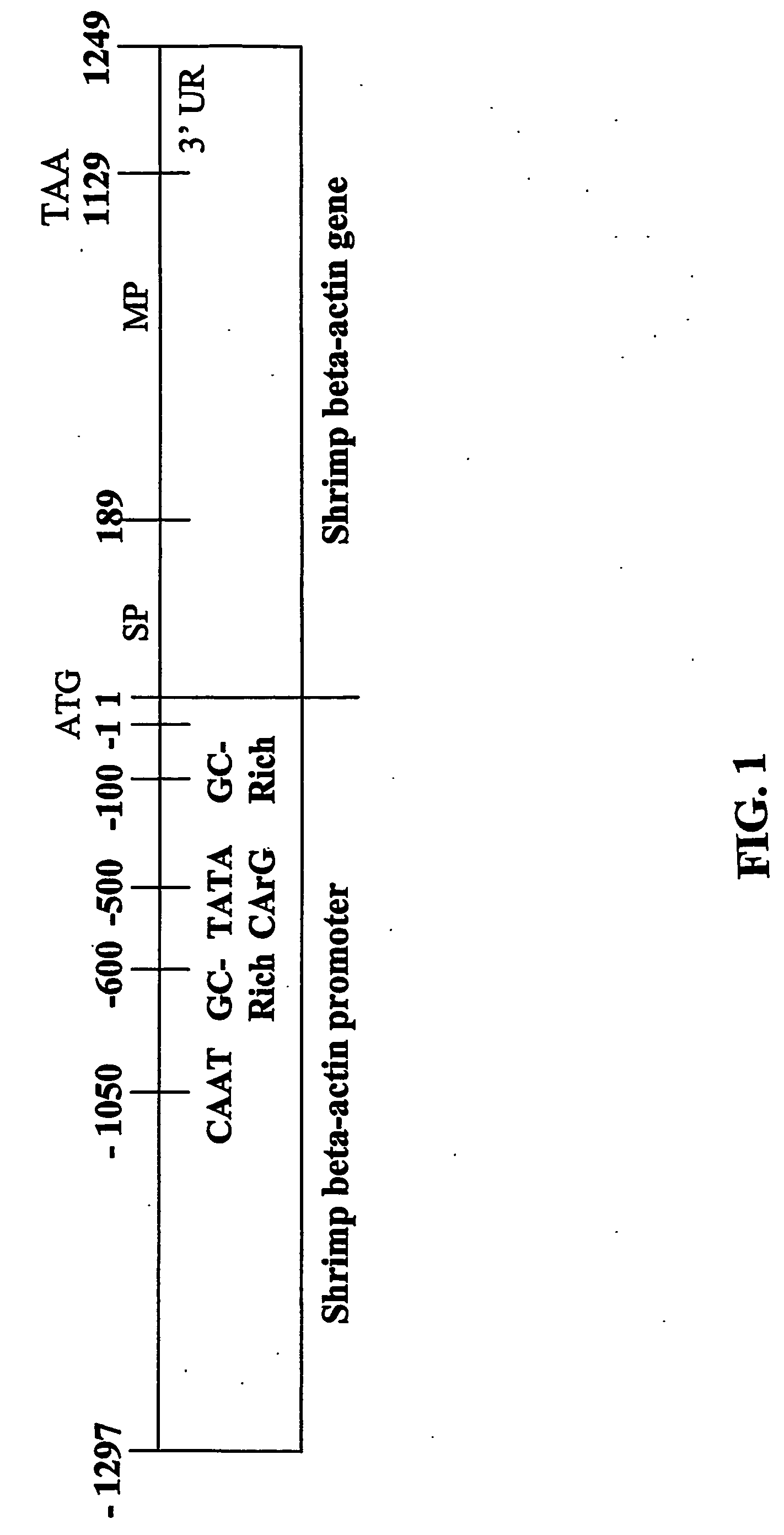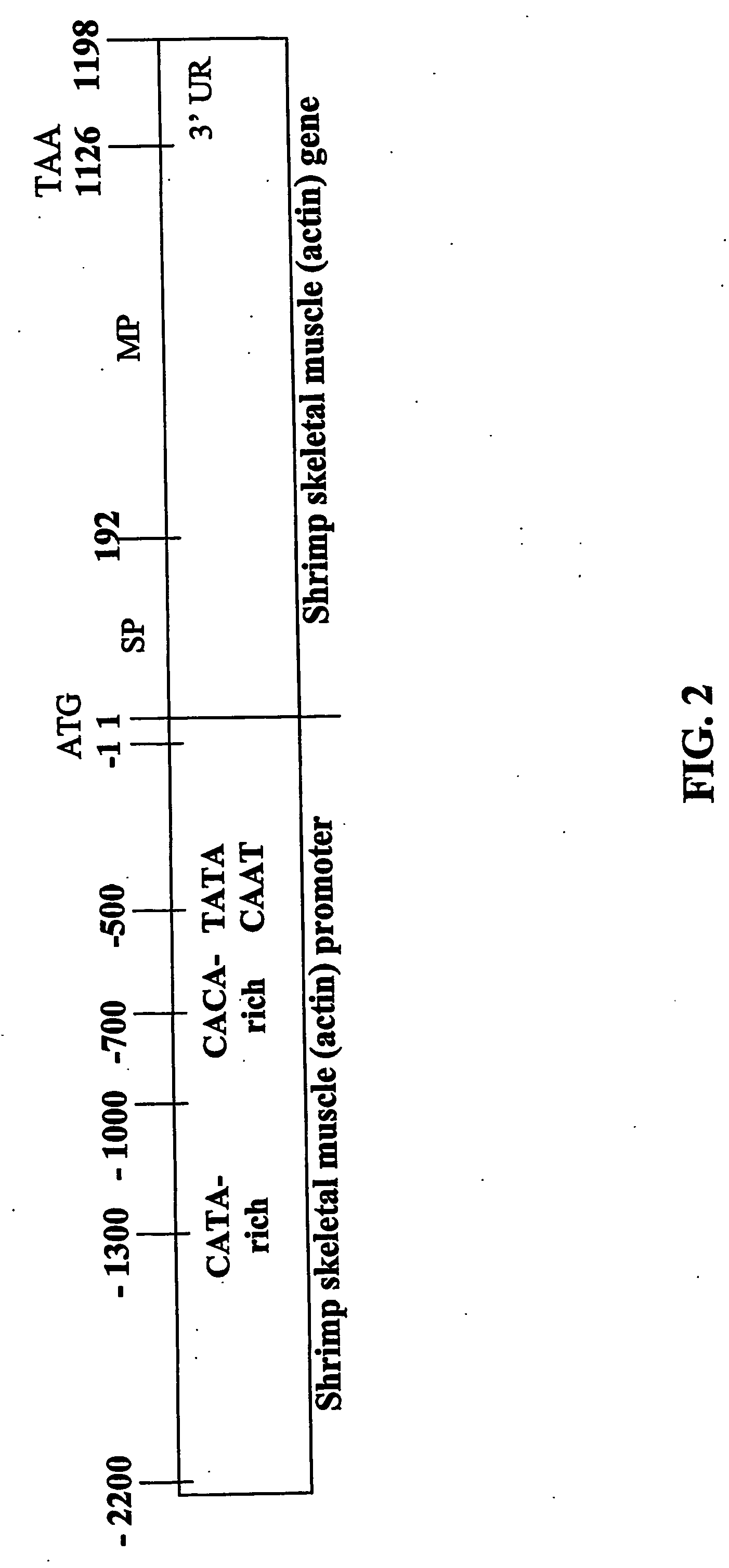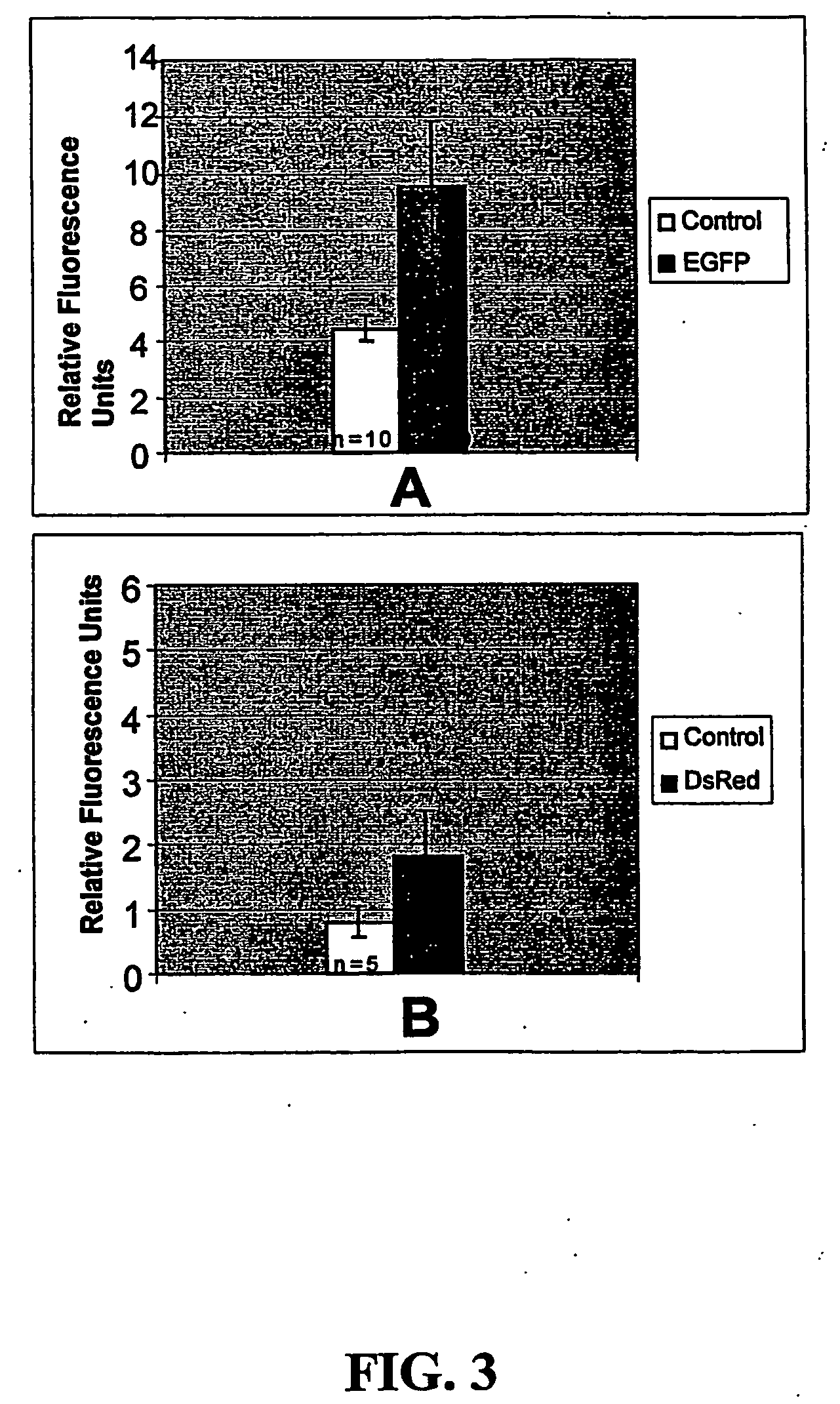Nucleotide sequences of shrimp beta-actin and actin promoters and their use in gentic transformation technology
a technology of promoters and nucleotides, applied in the field of shrimp promoter nucleotide sequences, can solve the problems of shrimp infectious diseases taking a devastating toll on aquaculture production, virus posing the greatest threat to shrimp survival rate, no effective chemicals or antibiotics to treat viral diseases, etc., to achieve the effect of regulating the growth of an animal and increasing the stress tolerance of an animal
- Summary
- Abstract
- Description
- Claims
- Application Information
AI Technical Summary
Benefits of technology
Problems solved by technology
Method used
Image
Examples
example 1
Animals
[0074] Live shrimp and fertilized eggs of L. vannamei were obtained from a local aquafarm in Hawaii. Immediately after fertilization, the shrimp eggs were collected with a fine mesh net and concentrated by a brief centrifugation at 1000 g for 20 seconds, then transferred to 1.5 ml sterilized sea water in a small dish and subjected to micro-injection.
example 2
Micro-Injection Procedures
[0075] Procedures of micro-injection followed the methods of Chong et al., “Expression and Fate of CAT Reporter Gene Microinjected into Fertilized Medaka (Oryzias latipes) Eggs in the Form of Plasmid DNA, Recombinant Phage Particles and its DNA,”Theor. Appl. Genet. 78:369-380 (1989), Penman et al., “Factors Effecting Survival and Integration Following Micro-Injection of Novel DNA in Rainbow Trout Eggs,”Aquaculture 85:35-50 (1990); Collas et al., “Transferring Foreign Genes into Zebrafish Eggs By Microinjection,” In Houdebine, L. M. (ed.) Transgenic Animals—Generation and Use Harwood Academic Publishers (In Press); which are hereby incorporated by reference in their entirety), with modifications. Briefly, microinjection was performed with the Femtojet microinjection system (Brinkmann Instruments, Inc., Westbury, N.Y.). Femtotip injection needles (Brinkmann Instruments, Inc.) were secured to the micromanipulator (Drummond Scientific Co., Philadelphia, Pa.) m...
example 3
[0076] Immediately following injection, the putative transformed eggs were placed in a one-liter container with aerated seawater at room temperature where hatching takes place in about one day. After hatching, larvae were transferred to a 5-gallon glass aquarium (16″L×8″W×10″H) with aerated seawater containing 0.15 ppm each of penicillin and streptomycin. Control groups of shrimp eggs were treated identically except for injection with water alone. The techniques for raising penaeid shrimp from the egg to post-larvae generally followed the methods described by Mock et al., “Techniques for Raising Penaeid Shrimp from the Egg to Postlarvae,”Maricult. Proc. World Soc. 3:143-156 (1972), Brown et al., “The Maturation and Spawning of Penaeus stylirostris Under Controlled Laboratory Conditions,”Proc. World Maricult. Soc. 11:488-499 (1980), and Wyban et al., “Intensive Shrimp Growth Trials in a Round Pond,”Aquaculture 76:215-225 (1989) (which are hereby incorporated by refe...
PUM
| Property | Measurement | Unit |
|---|---|---|
| diameter | aaaaa | aaaaa |
| diameter | aaaaa | aaaaa |
| pH | aaaaa | aaaaa |
Abstract
Description
Claims
Application Information
 Login to View More
Login to View More - R&D Engineer
- R&D Manager
- IP Professional
- Industry Leading Data Capabilities
- Powerful AI technology
- Patent DNA Extraction
Browse by: Latest US Patents, China's latest patents, Technical Efficacy Thesaurus, Application Domain, Technology Topic, Popular Technical Reports.
© 2024 PatSnap. All rights reserved.Legal|Privacy policy|Modern Slavery Act Transparency Statement|Sitemap|About US| Contact US: help@patsnap.com










